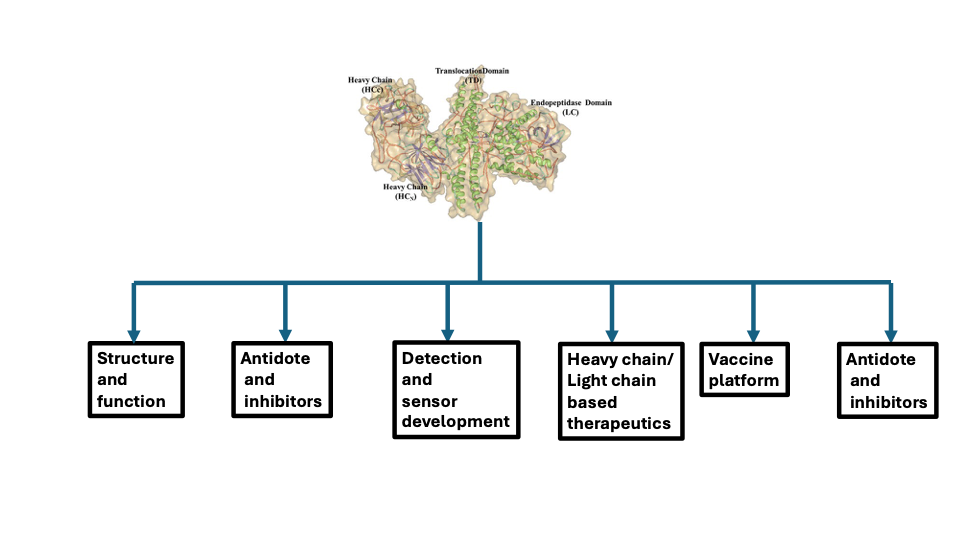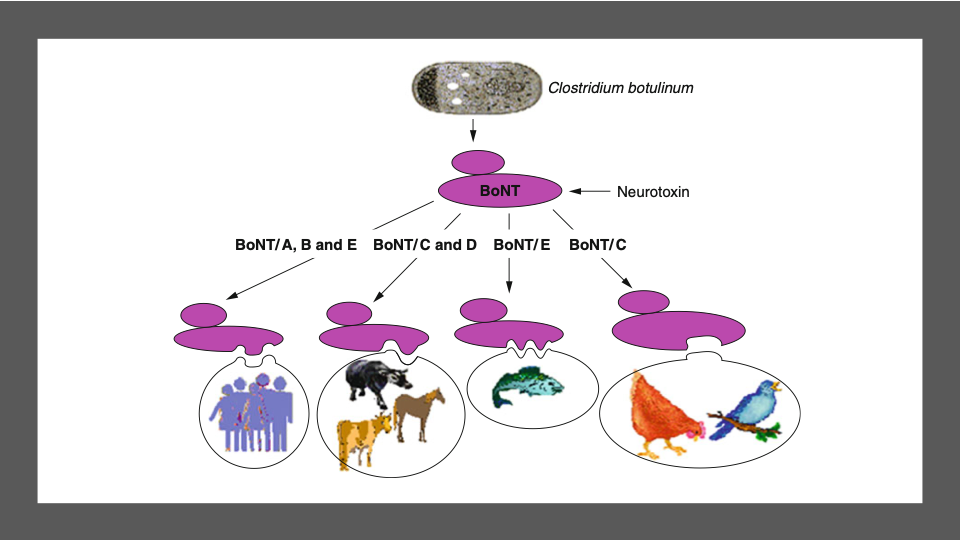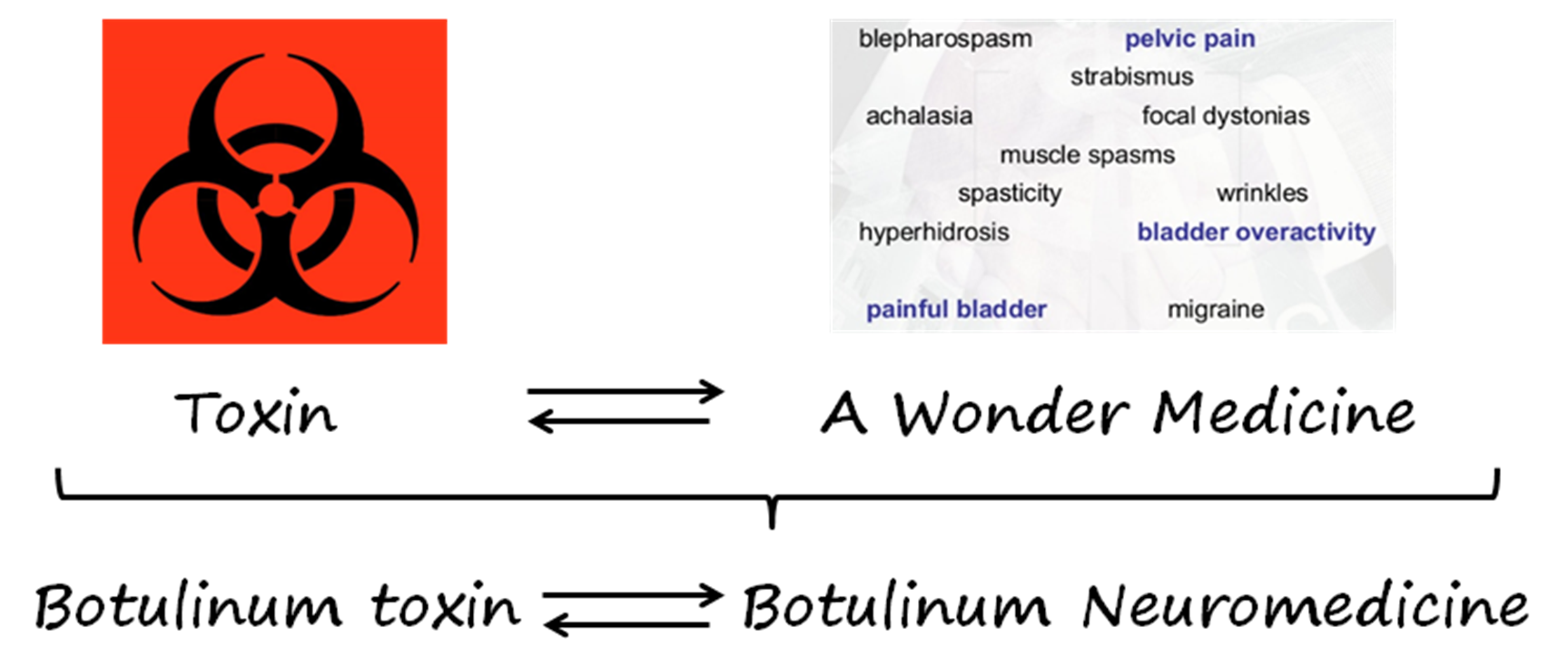About BRC
Research on Botulinum Neurotoxin at BRC

Botulinum neurotoxins produced by Clostridium botulinum are the most potent toxic reagents currently known to man. Our research involves molecular mechanism of the production of the toxin, its secretion from the bacterial cells, stability of the toxin under natural and artificial adverse conditions, cloning of genes and their expression, extraction of the toxic and non-toxic neurotoxin associated proteins (NAPs), analysis of the role of NAPs in the stability and detection of the toxin, immunochemical analysis of the toxin and NAPs, structural and functional differences among different serotypes of toxins, purification of the toxin and its subunits, preparation of recombinant toxin fragments, examination of the biological activity of the toxin and its active fragments, binding of the toxin to its receptor(s), isolation and purification of putative protein receptors and analysis of their binding to the toxin, mechanism of toxin translocation into the nerve cell, and mechanism of the endopeptidase activity of botulinum neurotoxin.
In our research we apply microbiological, immunochemical, biochemical, molecular biological, analytical, and biophysical techniques. We have been using cloning and gene sequencing, electrophoresis (capillary zone and conventional), chromatography (HPLC and conventional), Western blot, ELISA, immunosensor, UV/Vis absorption, atomic absorption, mass spectroscopy, circular dichroism, infrared spectroscopy, steady state and lifetime fluorescence spectroscopy, calorimetry, tissue culture, radioisotope labelling, and other techniques. Our analysis involves proteins, nucleic acids, lipids and carbohydrate. Our major findings so far have resulted in identification of heat shock proteins in Clostridium botulinum, novel role of NAPs in the stability and function of botulinum neurotoxin, biosensor-based immunodetection of botulinum neurotoxin, identification, purification and binding of protein receptor, membrane channel activity of different fragments of botulinum neurotoxins, secondary, tertiary and quaternary structural analysis of toxin and its light and heavy chains, mechanistic and catalytic role of zinc in the toxin's endopeptidase activity, and molecular basis of botulinum neurotoxin's biological activity.
The Most Potential Poison Ever Known in the World

Four types of botulism are recognized: food borne, infant, wound, and a form of botulism whose classification is as yet undetermined. Certain foods have been reported as sources of spores in cases of infant botulism and the undetermined category; wound botulism is not related to foods. Food borne botulism is the name of the disease (actually a food borne intoxication) caused by the consumption of foods containing the neurotoxin produced by C. Botulinum. See our Current Research Interest: Infant botulism, first recognized in 1976, affects infants under 12 months of age. This type of botulism is caused by the ingestion of C. Botulinum spores which colonize and produce toxin in the intestinal tract of infants (intestinal toxemia botulism). Of the various potential environmental sources such as soil, cistern water, dust and foods, honey is the one dietary reservoir of C.
Botulinum spores thus far definitively linked to infant botulism by both laboratory and epidemiologic studies. The number of confirmed infant botulism cases has increased significantly as a result of greater awareness by health officials since its recognition in 1976. It is now internationally recognized, with cases being reported in more countries. Wound botulism is the rarest form of botulism. The illness results when C. Botulinum by itself or with other microorganisms infects a wound and produces toxins which reach other parts of the body via the blood stream. Foods are not involved in this type of botulism. Undetermined category of botulism involves adult cases in which a specific food or wound source cannot be identified. It has been suggested that some cases of botulism assigned to this category might result from intestinal colonization in adults, with in vivo production of toxin. Reports in the medical literature suggest the existence of a form of botulism similar to infant botulism, but occurring in adults. In these cases, the patients had surgical alterations of the gastrointestinal tract and/or antibiotic therapy. It is proposed that these procedures may have altered the normal gut flora and allowed C. Botulinum to colonize the intestinal tract.
Nature of the Disease

Infective dose - a very small amount (a few nano grams) of toxin can cause illness. Onset of symptoms in food borne botulism is usually 18 to 36 hours after ingestion of the food containing the toxin, although cases have varied from 4 hours to 8 days. Early signs of intoxication consist of marked lassitude, weakness and vertigo, usually followed by double vision and progressive difficulty in speaking and swallowing. Difficulty in breathing, weakness of other muscles, abdominal distention, and constipation may also be common symptoms. Clinical symptoms of infant botulism consist of constipation that occurs after a period of normal development. This is followed by poor feeding, lethargy, weakness, pooled oral secretions, and a wail or altered cry. Loss of head control is striking. Recommended treatment is primarily supportive care. Antimicrobial therapy is not recommended. Infant botulism is diagnosed by demonstrating botulinum toxins and the organism in the infants' stools.
Botulinum Toxin : A Wonder Medicine
One of the naturally existing potent molecules is Botulinum Neurotoxins (BoNTs). Although BoNTs are extremely toxic molecules, these are now increasingly being used for the treatment of disorders related to muscle hyperactivity and glandular hyperactivity. Purified botulinum toxin A was the first bacterial toxin to be used as a medicine. The US Food and Drug Administration (FDA) approved purified botulinum toxin A (Botox™) in 1989 for treating two eye conditions: blepharospasm and strabismus. Botox™ has since found other medical and cosmetic uses and was FDA-approved in 2002 for the treatment of moderate-to-severe frown lines between the eyebrows known as glabellar lines. There are other botulinum toxin A based therapeutic products, including Dysport™ and Xeomin™, which are often used in other areas of the face for cosmetic purposes. These have been used in the treatment of other medical conditions as well, including migraine headaches, cervical dystonia (a muscle disorder of the neck muscles), primary hyperhidrosis (excessive sweating), and nearly 800 other neuromuscular disorders. Although it is early to establish the nociceptive behavior of BoNT, peripheral injection of botulinum toxin A induces nociceptive behavior in animal models of inflammatory and traumatic neuropathic pain. It is such a wonder medicine that we recommend it be called Botulinum Neuromedicine!


